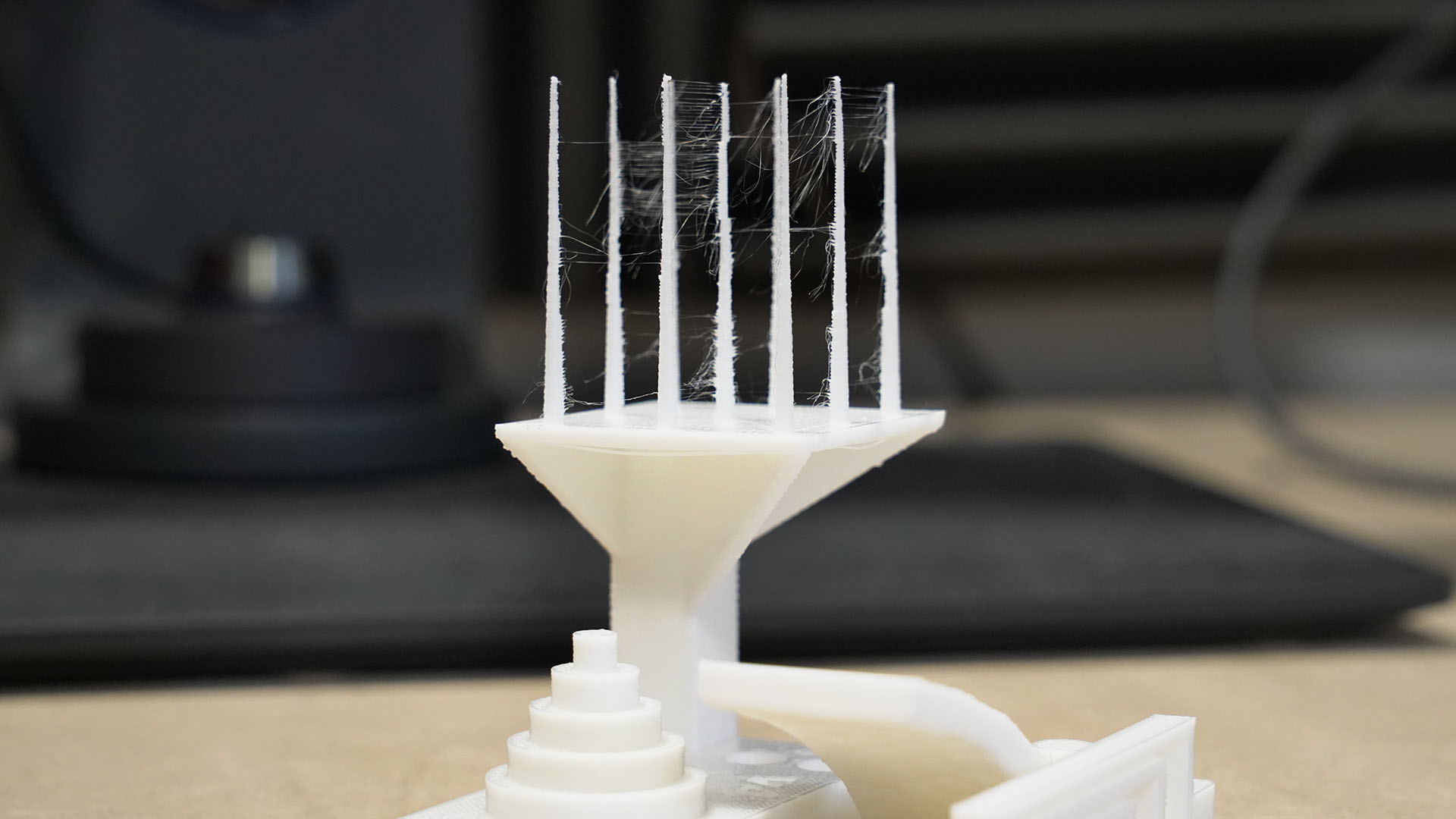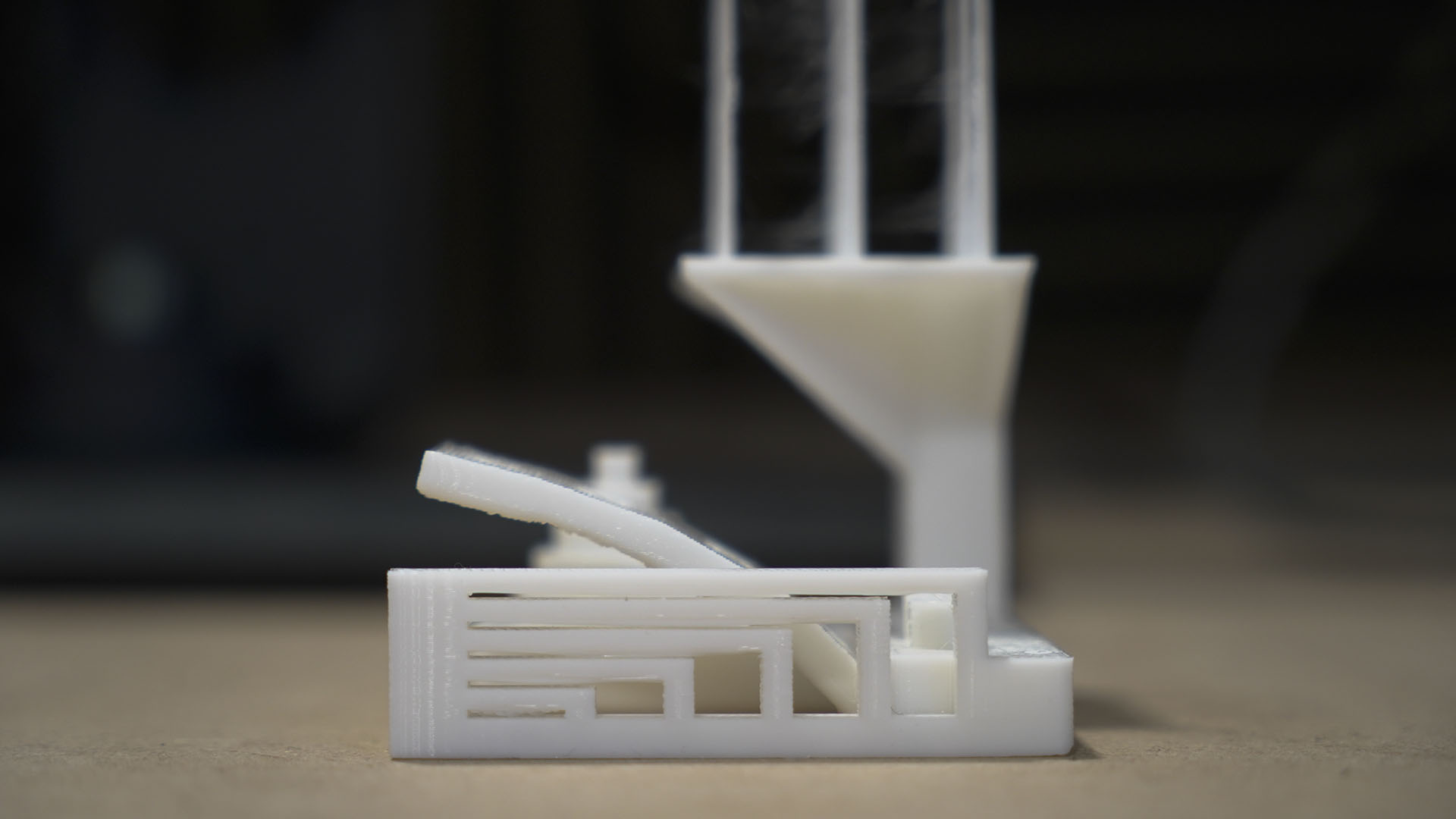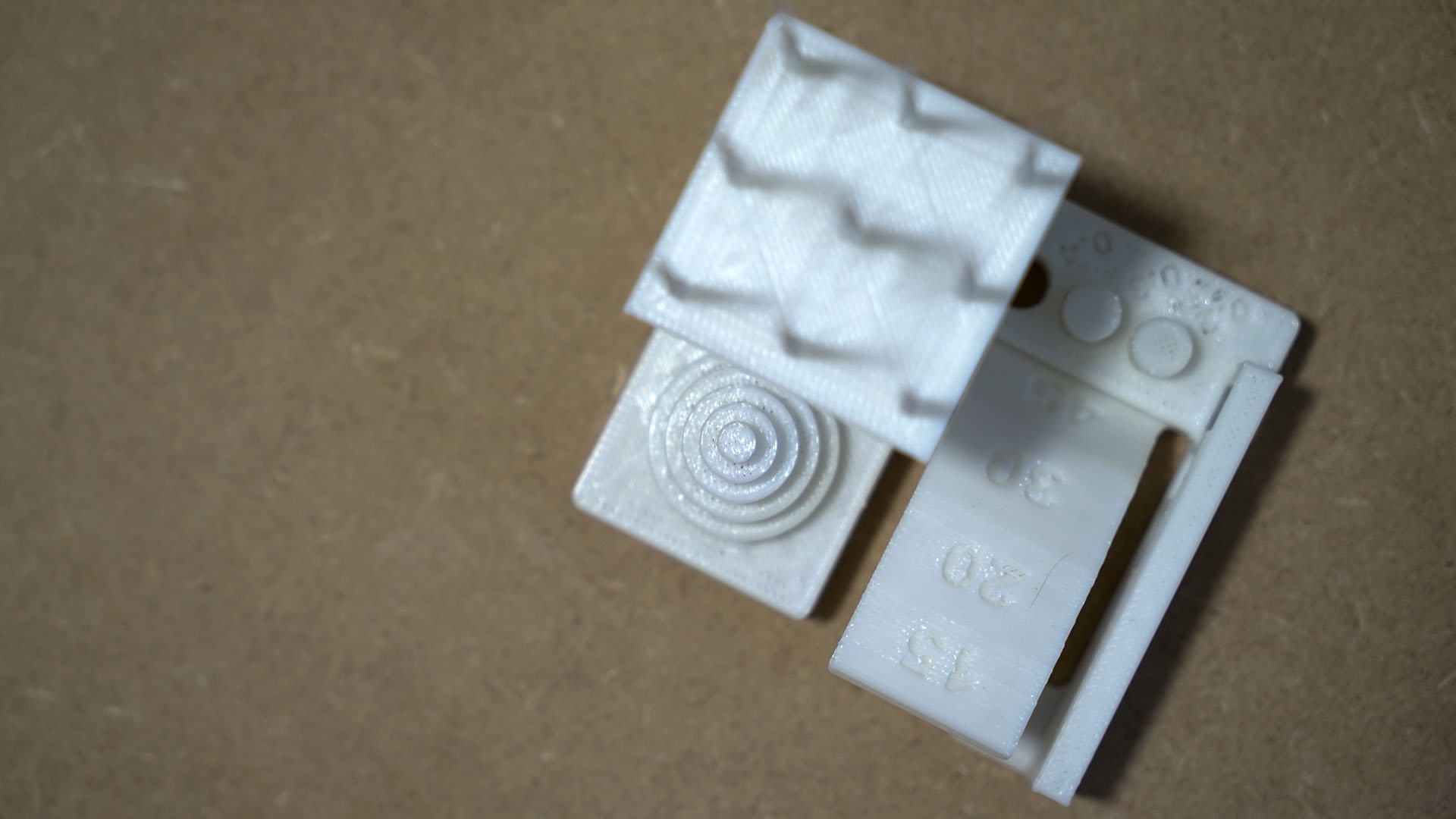Why you can trust TechRadar
Performance
Running through the prints that come installed on the card and the result are impressive. They're more than impressive, not quite Original PRUSA i3 MK3s quality but not so far behind.
The layer visibility is there but smooth enough for you to be pleasantly surprised at the results for a printer of this price. Checking through all the prints in the card and each one looks good.
A nice touch is the fan shroud file which Crazy3DPrint include on the SD card. Once printed, you can attach it to your printer as an example of the quality that's possible.

The 3D files that Crazy3DPrint include are good solid models with nothing too tricky to test the machine's abilities. The only way to thoroughly test CZ-300's quality is with the Autodesk Kickstarter project models and the old favourite 3DBenchy.
Print quality
Dimensional accuracy - score of 4
- Target 25 = X: 24.61mm / 0.39mm Error | Y: 24.73mm / 0.27mm Error
- Target 20 = X: 19.87mm / 0.13mm Error | Y: 19.91mm / 0.09mm Error
- Target 15 = X: 14.81mm / 0.19mm Error | Y: 14.97mm / 0.13mm Error
- Target 10 = X: 9.96mm / 0.04mm Error | Y: 10.04mm / 0.04mm Error
- Target 5 = X: 4.97mm / 0.03mm Error | Y: 5.06mm / 0.06mm Error
- X Error Average = 0.156
- Y Error Average = 0.118
- X&Y Error Average = 0.137
The CZ-300 dimensional accuracy results are surprisingly good for a printer of this size with little overall margin for error. However, look closely at the stack of cylinders, and you will see that the smaller cylinders are more oval than circular.
Fine Flow Control - score of 2.5
The quality of the spikes is excellent with all nine reaching the full height without breakages or error. There is, however, some fine stringing between each which can easily be removed or reduced by increasing the retraction settings to 5mm.
Fine Negative Features - score of 3
Of the five posts, three are removed easily. The slight oval rather than circle of the holes means that the last two posts are held firmly into place.
Overhangs - score of 4
The overhangs are usually the test that shows the printer's abilities, and here the CZ-300 does a fantastic job. Only on the final 15º step is there any sign of sagging and even then it's minimal.

Bridging - score of 5
The performance for bridging is about as good as I've seen from any printer. There is no sagging of the filament, and each is printed almost perfectly.
XY resonance - score of 0
Look across the markings, and resonance pattern in the wall is visible, although not overbearing.
Z-axis alignment - score of 0
Again there are signs, but the appearance is minimal. As this printer uses fine lead screw more akin to high quality threaded bolts for the Z-axis, this is to be expected and won't detract too much from the quality of the finish.
Adding up the totals gives a final score of X out of 18.5 out of 30.
Moving on from the first benchmark test to 3DBenchy and again, the results using Cura 4 are impressive. The printer did struggle at the finer resolutions, but across the mid-quality range, there was little to raise any concerns.
Trying out a few test models and again the resulting 3D prints showed decent quality. Some of the finer details did prove a little tricky, but the printer is excellent at overhangs.

What was apparent was that while the CZ-300 was able to handle most prints with ease, there were two areas that it did struggle.
The first was with dimensional accuracy, it wasn't miles out, but it was more than I've come to expect from more expensive machines.
The other issue is with printing smooth curves. This was especially apparent with the dimensional test and the stack of cylinders.
Looking down at the stack and you can see that there is some slight ovaling of the cylinders. However, this wasn't so much of an issue when printing 3DBenchy.
Final verdict
Impressive sums up the CZ-300. At no point does it claim to be leading 3D technology or breaking new ground, it's just a decent basic 3D printer.
After a couple of months with the machine, I've been impressed with the overall quality. It's basic, but it all works incredibly well.
A testament to this thought of design is the filament reel holder, it's essentially a bar on the side of the printer, but it's attached, in the right position and does the job.
Proper bearings have been used where they're needed and once constructed the printer is reliable, and all feels robust and of a decent quality.
The main control interface is again very simple running on the Marlin firmware, there's little here to excite, but it runs the files through well and heats the huge build platform and hotend at a decent speed.
Print speeds are good, it's not overly slow and keeps pace with most more advanced printers without issue.
When it comes to the all-important print quality, this is where the CZ-300 stands out. Like early 3D printers, it's all about the set-up, take your time, and the CZ-300 will reward you with decent quality prints.
If you're starting out and want a cheap 3D printer on a large scale, then you really can't go wrong with the CZ-300. The printer is a perfect solution for hobbiests, modellers or anyone wanting to get started with realising their design ideas. It may not have the spot on quality of the Original PRUSA MK3S, but then it's is a far cheaper machine.
It's also an excellent machine for tinkering, updating and getting under the skin of the technology.
- We've also highlighted the best 3D printers
Ali Jennings is the imaging lab manager for Future Publishing's Photography portfolio. Using Imatest Master and DxO Analyser he produces the image quality tests for all new cameras and lenses review in TechRadar's cameras channel. Ali has been shooting digital since the early nineties and joined Future's Photography portfolio back in 2003.
